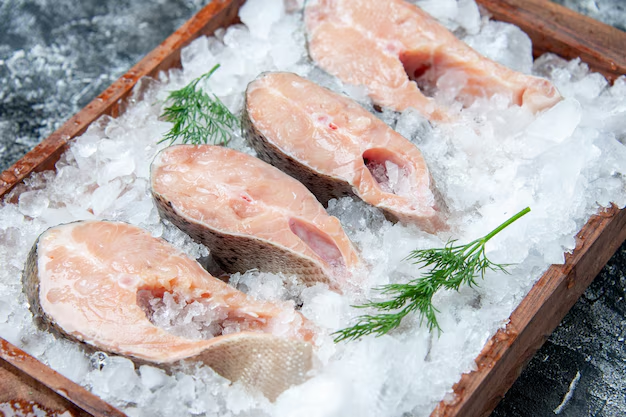How Long Can Raw Shrimp Really Last In Your Fridge?
Imagine this: You bought a batch of raw shrimp planning to cook a tantalizing seafood dish, but life happened, and it’s been sitting in your refrigerator for a few days now. You might find yourself pondering, "How long does raw shrimp really stay fresh in the fridge?" This essential query about food safety can help you determine if your dinner plans are still viable or if it’s time to pivot. Understanding the shelf life of raw shrimp is crucial for both health and culinary reasons. Let’s dive into this topic to unravel the mystery of storing shrimp safely and extend its shelf life.
The Lifespan of Raw Shrimp in the Refrigerator
General Guidelines
Raw shrimp, like most seafood, is highly perishable and requires careful storage. Refrigeration slows down the growth of bacteria but doesn’t stop it altogether. Shrimp, when stored correctly in the refrigerator, typically stays fresh for around 1 to 2 days. Keeping shrimp at a consistent, cold temperature is key to maximizing its freshness during this short timeframe.
Factors Impacting Freshness
Several factors influence how long shrimp can actually stay fresh in the refrigerator:
- Temperature: Keeping your fridge at an optimal temperature of below 40°F (around 4°C) ensures the shrimp stays as fresh as possible.
- Storage Conditions: Using airtight containers or tightly sealed plastic wraps helps prevent cross-contamination with other foods and limits exposure to air.
- Quality at Purchase: The freshness of the shrimp at the time of purchase significantly affects how long it will last in your fridge. Opt for shrimp that appear translucent and have a fresh aroma.
Storing Shrimp: Best Practices
Preparation Tips
Before refrigerating, clean the shrimp thoroughly. Remove any packaging materials that might not be suitable for refrigeration, such as Styrofoam or plastic trays. Rinse the shrimp under cold running water and pat them dry with paper towels to reduce moisture that promotes spoilage.
Choosing the Right Container
Store your shrimp in a suitable container:
- Airtight Containers: These effectively prevent other fridge odors from pervading the shrimp and vice versa.
- Resealable Bags: Ensure excess air is squeezed out before sealing to preserve freshness.
Labeling and Tracking
It may seem mundane, but labeling the container with the purchase date can be extremely helpful. It serves as an easy reminder of the expiration timeline to prevent accidental waste or, worse, consumption past safe limits.
Recognizing Spoiled Shrimp
Tell-Tale Signs
It's imperative to perform a quick quality check before cooking your shrimp to ensure it is still good:
- Smell: Fresh shrimp should have a mild, ocean-like aroma. A strong, fishy, or ammonia-like smell indicates spoilage.
- Color and Texture: Look for any change to a grayish hue or slimy texture, both signs that the shrimp may be past its prime.
Related Topics in Food Safety
Exploring the storage of shrimp naturally leads to related discussions about seafood safety and the best practices to keep your culinary creations safe and delicious.
Freezing Shrimp for Longevity
If your plans shift and you're unable to use the shrimp within the optimal freshness window, freezing extends its life dramatically.
- Prep for Freezing: Patting shrimp dry and freezing in a single layer before transferring to a larger container prevents clumping and freezer burn.
- Freezing Time: Properly frozen, shrimp can last up to 3 to 6 months without significant loss of flavor or texture.
Defrosting Safely
When you're ready to cook, avoid leaving shrimp at room temperature. Instead, opt for these thawing methods:
- Refrigerator Thawing: This method, although slow, is the safest as it keeps the shrimp at a consistent cool temperature.
- Cold Water Thawing: Place shrimp in a leak-proof bag and submerge in cold water, changing the water every 30 minutes.
Ensuring Your Shrimp is Cooked Perfectly
Cooking Techniques
Proper cooking is your last line of defense against any lingering bacteria. Most shrimp are cooked thoroughly in mere minutes. They should turn opaque and have a healthy pink color when cooked fully.
Culinary Uses
Cooked shrimp suits a diverse array of dishes, from pastas and stir-fries to salads and appetizers. Here are some key tips:
- Sautéing: Quick and effective, ideal for retaining the shrimp's juicy texture.
- Grilling: Offers a smoky flavor—perfect for summertime meals.
Summary of Key Takeaways
Here's a handy list to keep shrimp storage nuances fresh in your mind 📝:
- 🕒 Keep raw shrimp in the fridge for up to 2 days: Store immediately and keep the fridge cool.
- 👐 Opt for airtight containers: They prevent contamination and odor mingling.
- 💡 Labeling with a date is crucial: This ensures FIFO (First In, First Out) practices.
- 🌡️ Store at or below 40°F (4°C): Maintain your refrigerator's optimal temperature.
- 🤔 Check shrimp before use: Be alert to fishy odors or changes in texture.
- ❄️ Freeze for longer storage: Up to 6 months if properly sealed and frozen.
- 🔥 Ensure shrimp is fully cooked: Helps eliminate any unwanted bacteria.
Understanding the shelf life of shrimp and effective storage methods allows you to enjoy seafood confidently and safely. Whether you're a meticulous planner or the impulsive type, mastering these best practices ensures you always have the freshest ingredient when the craving hits!
